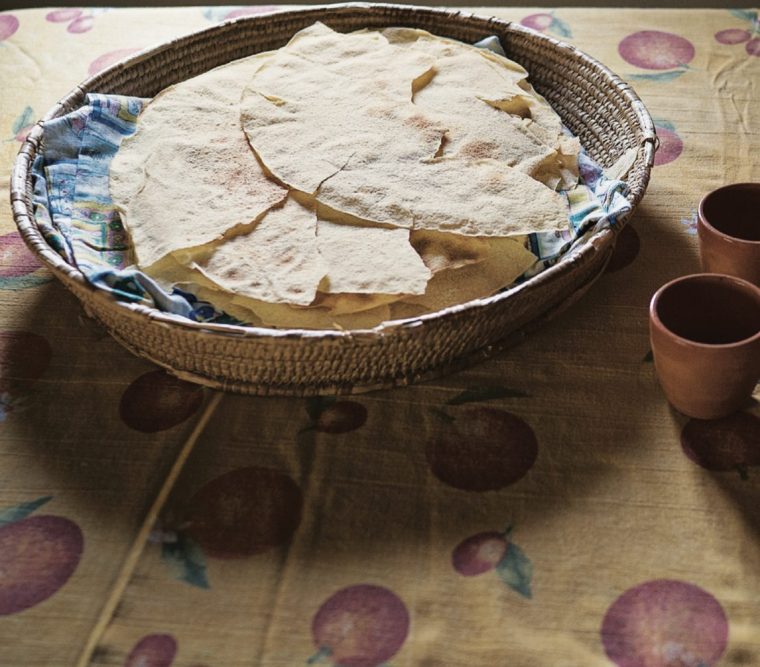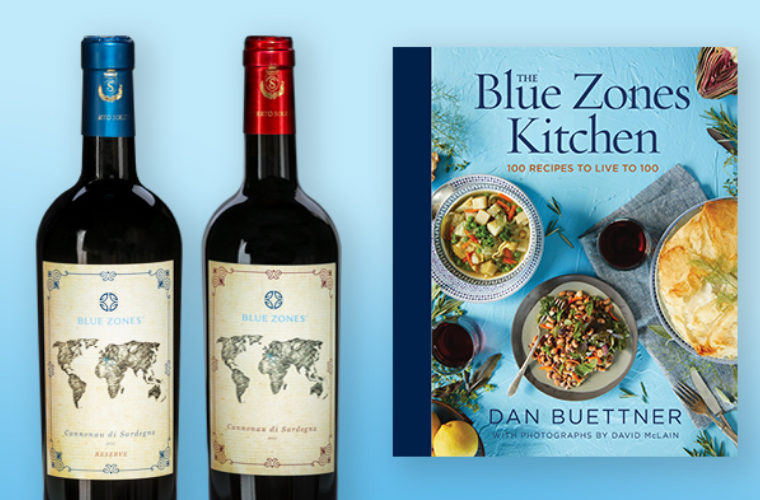
One of the most distinctive Sardinian foods, pane carasau is a crisp, thin bread that is shaped in rounds. Owing to its appearance and crackling sound, it is also called sheet music bread (carta de musica) in other parts of Italy. This bread dates back to ancient times, when shepherds herding their flocks needed a food that would not go bad while they were away from home for long stretches—and pane carasau can keep without refrigeration for a year or so.
Made from durum wheat, yeast, water, and salt, this flatbread is first baked so that it inflates into a balloon shape, then cut along the circumference of the bread into two thin sides, flipped so that the porous sides are on the outside, and then baked again to achieve its characteristic crispness and color. Traditionally, village women make the bread once a month in a group effort.
In Sardinia, pane carasau graces the table at almost every meal, and it also forms the base of many other dishes, such as a layered lasagna-type dish, in a pizza-like dish called pane frattau, and in the ever popular pane guttiau. Pane guttiau is pane carasau drizzled with olive oil, sprinkled with salt, and toasted or grilled quickly until golden brown. Pair it with sweet green olives and a glass of wine for a lovely Sardinian antipasto.
You can also buy pane carasau at gourmet grocers and online.
1 1⁄2 cups all-purpose flour
1 1⁄2 cups semolina flour
1 1⁄2 cups warm water, plus more if needed
1 packet (1⁄4 ounce) active dry yeast
Pinch of salt
Extra-virgin olive oil and coarse sea salt, for serving
In a large mixing bowl, combine flours, water, yeast, and a pinch of salt; mix thoroughly to form a soft but firm dough.
Divide the dough into quarters; cover and let rest for an hour.
Preheat oven to 375 degrees.
Using a rolling pin and lightly floured surface, roll each quarter of dough into paper-thin rounds.
Bake on a lightly oiled baking pan for 2 minutes.
Flip and bake for another 2-3 minutes, or until bread is crispy and brown.
To serve, brush or drizzle lightly with olive oil and sprinkle with coarse sea salt.

The Blue Zones Kitchen fuses scientific reporting, National Geographic photography and 100 recipes that may help you live to 100. The Blue Zones’ food tradition is going the way of the dodo bird, thanks to the encroachment of the American Food Culture.
Learn More